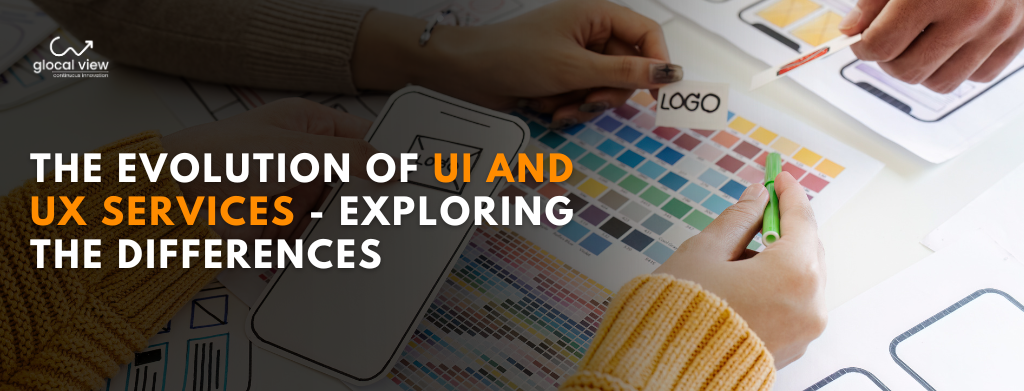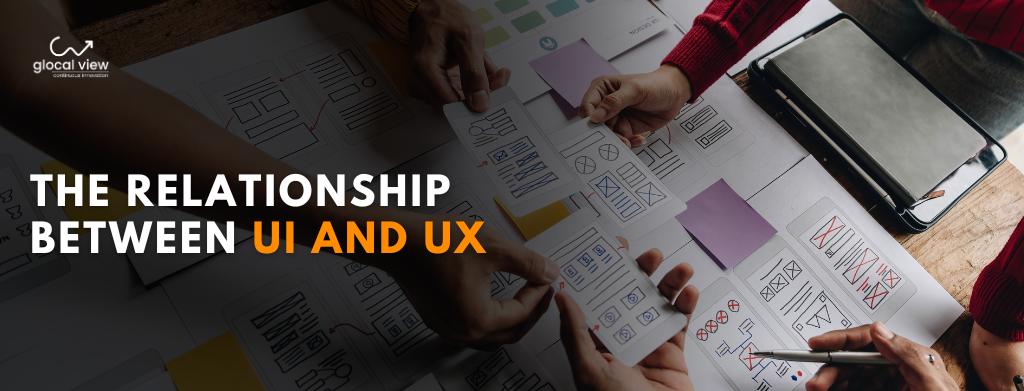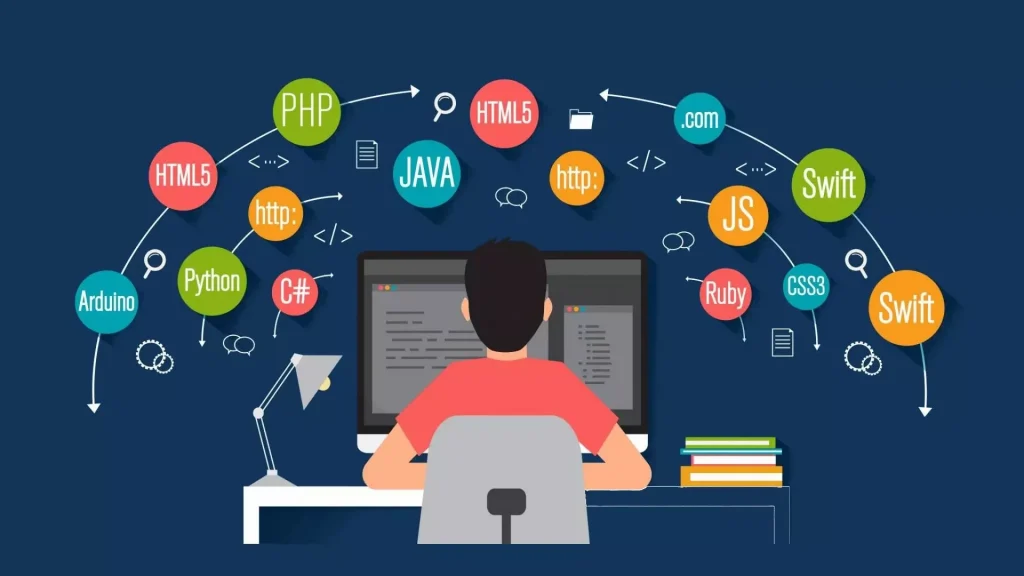
Introduction to The Article
UI And UX Services refer to User Interface (UI) and User Experience (UX). It has become more important in the field of web development to guarantee the success and effectiveness of websites and applications. Although the terms UI and UX are commonly used interchangeably, they refer to distinct elements of the design and development process, each with a unique meaning.
Importance of UI and UX Services in Web Development:
- Improved User Satisfaction: The goal of UI and UX services in Norway is to create an interface that is not only visually attractive but also user-friendly.
- More User Engagement: This can lead to them spending more time on the platform, having increased interaction, and being more likely to achieve their desired goals, whether it’s making a purchase or finding information.
- Enhanced Brand Credibility: A sleek and well-designed interface adds to the overall credibility of a brand. Users often associate a visually appealing and easy-to-navigate interface with a professional and reliable organization.
- Decreased Bounce Rates: A UI/UX design that hits the mark can help reduce bounce rates, which measures the percentage of visitors who leave a site after viewing only one page.
- In a Competitive World: having a top-notch UI and UX can give you a leg up. When given the choice, users tend to gravitate towards platforms that offer a smooth and enjoyable experience, instead of going for a competitor with a lacklustre interface.
Brief Overview of UI and UX
User Interface (UI): UI mainly focuses on how a website or application looks and feels. It encompasses design elements like buttons, icons, colour schemes, typography, and overall layout. The main aim of UI is to create an appealing and functional interface that enhances user interaction.
User Experience (UX): UX covers the complete user experience with a product or service. It goes beyond just the looks to take into account the user’s journey, interactions, emotions, and how satisfied they feel.
Understanding UI and UX Services in Norway
A. User Interface (UI):
Definition of UI:
The User Interface, commonly referred to as UI, is the visual and interactive part of a website, app, or any digital product that we use. It includes all the design and layout aspects that aim to create a pleasing and user-friendly experience.
Components of UI:
- Visual Design: This involves the overall appearance of the interface, including things like colours, typography (fonts), and images.
- Layout: It’s all about how the elements are organized on the screen, determining how users can navigate and interact with the interface.
- Buttons and Controls: These are interactive elements like buttons, sliders, and input fields that allow users to perform actions and move around the product.
- Icons: They are visual symbols used to represent actions, features, or ideas within the interface.
- Typography: This refers to the choice of fonts, font sizes, and formatting of text to make it easy to read and visually appealing.
B. User Experience (UX):
UX Definition:
User Experience, or UX for short, is the whole experience a user has when interacting with a system, product, or service. It addresses usability, accessibility, satisfaction, and emotional reaction, among other aspects of user contact.
Components of UX:
- Usability: This refers to how easily users can achieve their goals and complete tasks within the product. A design that prioritizes usability ensures efficient and effective user interactions.
- Information Architecture: It focuses on organizing and structuring the content and features of the product in a way that facilitates intuitive navigation and information retrieval.
- User Research: By conducting surveys, interviews, and usability testing, user research aims to gather insights into user behaviour, preferences, and needs.
- Prototyping: This involves creating interactive models of the product, allowing for testing and refining the user experience before entering the final development phase.
The Relationship Between UI and UX

A. How UI and UX Work Together:
Think of UI as the artist and UX as the architect when building a house. The User Interface (UI) is like the beautiful paint, furniture, and decorations inside the house, making it visually appealing. The User Experience (UX) is like the thoughtful design of rooms, hallways, and doors, ensuring everything is easy to find and use.
Seamless User Experience:
UI makes things look nice and pleasing.
UX makes sure everything works well and is easy to use.
Collaboration:
UI and UX collaborate like a great team to give users a delightful and hassle-free experience.
UI enhances the look, and UX ensures functionality and ease of use.
B. Examples of Websites with Great UI and UX:
Apple:
UI: Sleek and visually appealing design with clean lines and attractive visuals.
UX: Intuitive navigation, simple product exploration, and a seamless shopping experience.
Google:
UI: Simple and clean interface with a focus on clarity and minimalism.
UX: Easy-to-use search functionality, organized information, and quick access to various services.
Airbnb:
UI: Engaging visuals, high-quality images, and appealing layout for property listings.
UX: Intuitive search filters, straightforward booking process, and user-friendly navigation.
Amazon:
UI: Well-organized product pages with clear images and information.
UX: Effortless shopping experience, personalized recommendations, and a streamlined checkout process.
Evolution of UI and UX Services
The UI Services Evolution:
In the past, UI design was all about static elements and not much interactivity, mainly for desktop apps. But then came responsive design, shaking things up by making UI adaptable to different screen sizes for a consistent experience across platforms. And let’s not forget about material design, which Google brought to the table. It revolutionized UI by creating a cohesive language that emphasized touch-based interactions, depth, and vibrant colours. Suddenly, UI became more exciting and realistic, drawing users in like never before.
The UX Services Evolution:
Back in the day, UX design mostly focused on getting tasks done efficiently, with not much user research involved. But then came User-Centered Design (UCD), and everything changed. This new approach involved users throughout the design process and put a big emphasis on iterative prototyping. The goal was to make UX simpler and more user-friendly. And that’s where minimalism and flat design stepped in, decluttering the visual aspect while prioritizing essential features. The result? A streamlined and delightful user experience that hits all the right spots.
The main differences between UI and UX services can be explained as follows:
UI Services: Focusing on the Visual Design and Aesthetics
Regarding UI (User Interface) services, a digital product’s aesthetics and visual components are given primary importance. This includes making eye-catching layouts, choosing eye-catching colour schemes, generating captivating iconography, and making sure the presentation is visually appealing. The final objective is to create an interface that appeals to people and reflects the brand while still looking nice.
UX Services: Concentrating on User Satisfaction and Usability
On the other hand, UX (User Experience) services revolve around the overall user experience, to ensure user satisfaction and usability. This includes understanding the needs of users, conducting research, and designing interactions that are intuitive and efficient. The primary focus is to create a seamless and enjoyable journey for users, taking into consideration factors like ease of use, accessibility, and overall satisfaction with the product.
Trends in UI and UX Services:
Rise of Micro-Interactions and their Impact on UI and UX:
Micro-interactions, subtle animations or feedback in response to user actions, have gained prominence in UI and UX Services in Norway. These small animations enhance user engagement, provide feedback, and contribute to a more dynamic and enjoyable user experience. From button hover effects to loading animations, micro-interactions add a layer of responsiveness that improves overall usability.
Integration of AI and Machine Learning in Enhancing UX:
The integration of Artificial Intelligence (AI) and machine learning has significantly impacted UX. Smart recommendations, personalized content, and predictive analytics are examples of how AI enhances user experiences. By analyzing user behaviour and preferences, AI-driven systems adapt and optimize interfaces, creating more personalized and efficient interactions.
Conclusion,
In summary, UI and UX services have transformed from static designs to responsive, user-centric approaches, embracing trends like micro-interactions and AI integration. The field’s evolution highlights the importance of delivering visually appealing, user-friendly digital experiences. Continuous learning and adaptation are paramount in this dynamic landscape, ensuring professionals stay abreast of trends, incorporate new technologies, and prioritize user feedback for the ongoing enhancement of UI and UX services.




